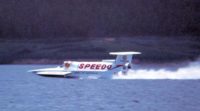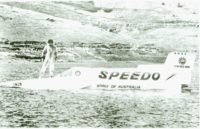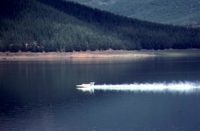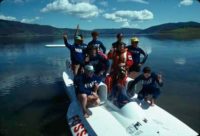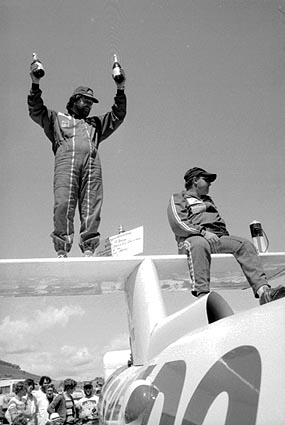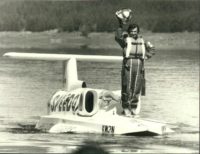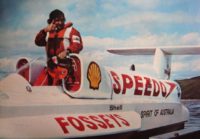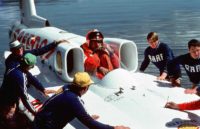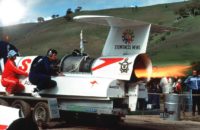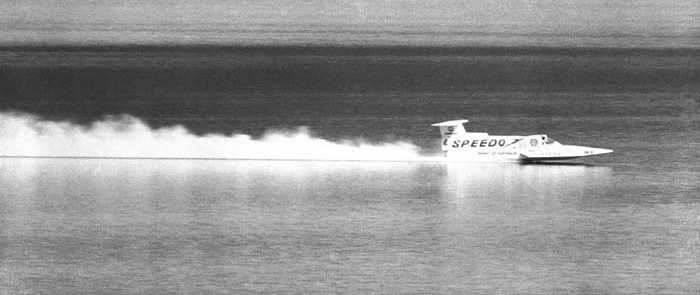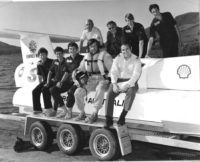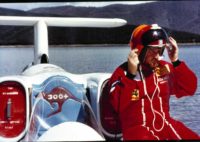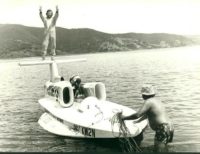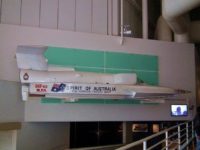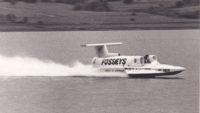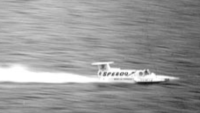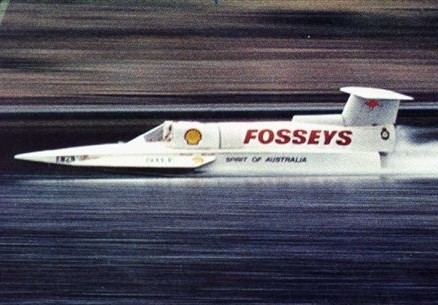 Ken Warby designed Spirit of Australia on the family kitchen table in 1970, and started construction in the backyard in 1972. built out in the open, which meant Ken could only build the boat in good weather and in daylight hour’s, Ken would by a piece of plywood and timber as his budget would allow him, Ken built the boat with only 3 power tools, a drill, circular saw, and Belt sander, the rest was done with hand tools. Ken went to an RAAF surplus auction in Sydney, he brought three j-34 engines, 2 for $100 each, and one for $60, this would be his source of power.
Ken Warby designed Spirit of Australia on the family kitchen table in 1970, and started construction in the backyard in 1972. built out in the open, which meant Ken could only build the boat in good weather and in daylight hour’s, Ken would by a piece of plywood and timber as his budget would allow him, Ken built the boat with only 3 power tools, a drill, circular saw, and Belt sander, the rest was done with hand tools. Ken went to an RAAF surplus auction in Sydney, he brought three j-34 engines, 2 for $100 each, and one for $60, this would be his source of power.
Ken had the boat ready to launch in 1974, Although the boat was far from finished, with no engine cowlings, air intakes, or tailplane, as Ken didn’t have the money to finish the boat, he setout testing the boat and built up the speeds to take the Australian National Speed record. With the boat building up speed Ken needed to find a longer stretch of water , after a long search Blowering Dam in New South Wales, near Tumut was picked at the location. Ken continued to build up speeds getting towards the 200MPH barrier. To help raise money for the project, Ken gave up his day job to focus on getting the world water speed record, Ken displayed the boat at Shell service stations around Australia( as Shell were one of Ken’s first sponsor’s) and Ken took up Oil Painting, Ken wanted to get windtunnel tests done on his design, this would assist him with working out exactly how to get Spirit of Australia the world record. Ken took his wind tunnel model to NSW University where Ken met Professor Tom Fink, Tom was one of the people who did the testing on Donald Campbell’s Bluebird K7, Tom was impressed with Ken’s design, and approach to the record, Tom ended up joining Ken’s team for the World Record bids.
Ken would travel around the Australia in the mid 1970’s displaying Spirit of Australia and selling oil paintings at shopping centres to raise money for the project, Ken then gained sponsorship from local retail store Fossey’s, this allow Ken to finish of the work that was needed after the wind tunnel testing, The engine cowlings, Tailplane, and air intakes, Ken tested Spirit of Australia at Blowering Dam in mid 1977, now reaching speed in the 270-280 MPH range, Ken didn’t know it at the time, but the j-34 he was using had some blockage in the injectors, and couldn’t make full power, Ken & Tom Fink did some calculations and can up with the idea of taking 1 1/2 inches off the rudder. This allowed Ken to take his first world water speed record at 288 MPH in November 1977.
Now Ken wanted to be the first man to break the 300 MPH barrier, Ken had assistance from RAAF personal, but this was in their spare time, With a new record looming, the RAAF approached Ken and offered their assistance, At Wagga Wagga RAAF Apprentice training base, they over haul one of Ken’s J-34’s, firstly they were suprised it even ran, let alone break a world record, Now with Sponsorship from Speedo, and a j-34 jet engine making full power Ken returned to Blowering Dam in 1978,this time became the first man in history to break the 300 MPH & 500 KMH barriers with an average speed of 317.60 MPH, not bad for a boat build in a shoe string budget,built in the backyard.
Ken is also the first and only person in history to design, build and drive a boat to an unlimited water speed record, the first Australian to hold an unlimited speed record, and today the only man alive to ever hold an unlimited water speed record
Spirit of Australia is now in the National Maritime Museum, Darling Harbour , Sydney Australia.


